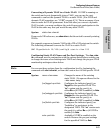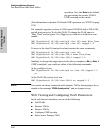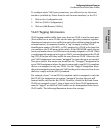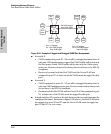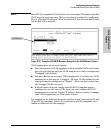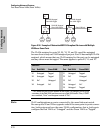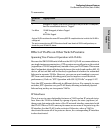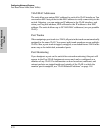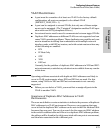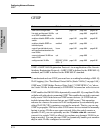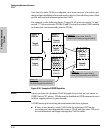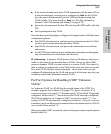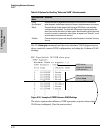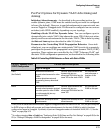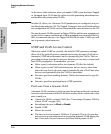
9-73
Configuring Advanced Features
Port-Based Virtual LANs (Static VLANs)
Configuring Advanced
Features
VLAN Restrictions
■ A port must be a member of at least one VLAN. In the factory default
configuration, all ports are assigned to the default VLAN
(DEFAULT_VLAN; VID = 1).
■ A port can be assigned to several VLANs, but only one of those assign-
ments can be untagged. (The “Untagged” designation enables VLAN oper-
ation with non 802.1Q-compliant devices.)
■ An external router must be used to communicate between tagged VLANs.
■ Duplicate MAC addresses on different VLANs are not supported and can
cause VLAN operating problems. These duplicates are possible and com-
mon in situations involving Sun workstations with multiple network
interface cards, with DECnet routers, and with certain routers where any
of the following are enabled:
•IPX
•IP Host-Only
•STP
•XNS
•DECnet
Currently, for the problem of duplicate MAC addresses in XNS and DEC-
net environments, a satisfactory solution is not available from any vendor
at this time.
Note Operating problems associated with duplicate MAC addresses are likely to
occur in VLAN environments where XNS and DECnet are used. For this
reason, using VLANs in XNS and DECnet environments is not currently
supported.
■ Before you can delete a VLAN, you must first re-assign all ports in the
VLAN to another VLAN.
Symptoms of Duplicate MAC Addresses in VLAN
Environments
There are no definitive events or statistics to indicate the presence of duplicate
MAC addresses in a VLAN environment. However, one symptom that may
occur is that the duplicate MAC address can be seen in the Port Address Table
for more than one port. You can do a search for the suspected MAC address
in the switch’s address table and if there is a duplicate MAC address problem,
the address will be found in the table associated with one port at one moment,
and then later associated with a different port.



